How to Organize a Fridge

Last updated September 7, 2023
Refrigerator organization helps you save time preparing meals and snacks. From the French door refrigerator to the door-in-door style, good refrigerator storage will also save you money as it reduces food waste. How to organize a fridge can seem like a daunting task if you have an abundance of grocery items.
When you organize refrigerator items, you can easily see what you have to avoid accidentally buying duplicate food. In addition, when items are easy to see and reach, they are more likely to get eaten, ensuring that nothing hangs around in the refrigerator long enough to spoil.
When you master fridge organization, you'll learn to store items in the areas which preserve them best. Follow along with this guide and learn the basics of refrigerator organization and some of the tools that make it easier to organize refrigerator items.
Difficulty:
Beginner
Duration:
Under 2 hours
Table of Contents
Clean and Discard
Prepare the Shelves
Organize Refrigerator Contents
Freshen the Interior
What Not to Store
Clean and Discard
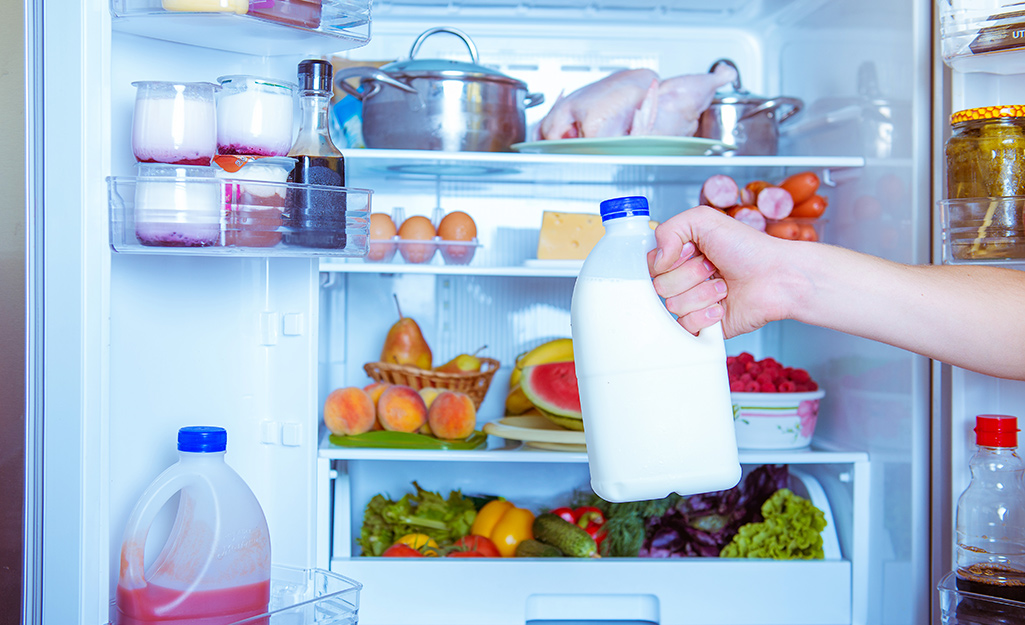
- Remove all items from the refrigerator. Discard any spoiled foods, anything that is long past its expiration date and any food item that appears to have changed in color, texture or smell.
- Wipe the shelves and door bins with a damp microfiber cloth. Any caked-on food can be lightly scrubbed with a paste of baking soda and warm water. You can also use tougher paper towels as well.
- Wipe down the outside of any jars and bottles that will be returned to the fridge.
Prepare the Shelves
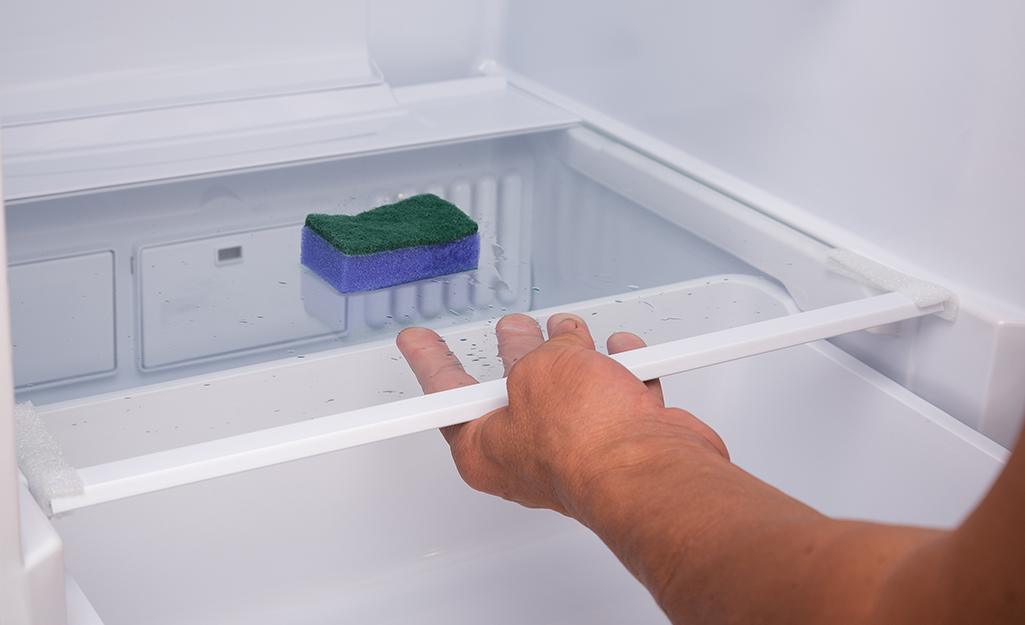
- If the shelves in the refrigerator are adjustable, readjust them to make better use of the interior space.
- Use water-resistant refrigerator mats and liners to line the shelves, door bins and humidity-controlled drawers. This will keep any sticky spills contained and make it easier to clean the refrigerator.
- Trim liners to perfectly fit each individual shelf and drawer.
Organize Refrigerator Contents
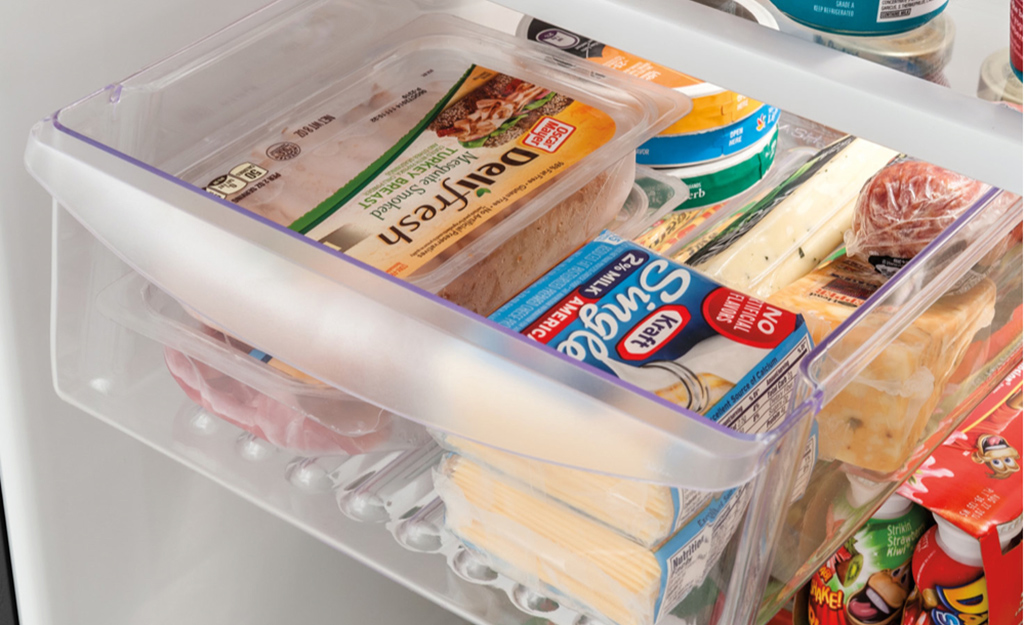
You may find it helpful to get some food storage bins to help keep items in the refrigerator collected and easy to remove and put away.
Begin by grouping like items together. For example, all salad dressings or sandwich condiments in one spot, all soft drinks in another. This will make individual items easier to locate and ensure that items that you usually use together, such as mustard and mayonnaise, will be handy when you need them.
- Top shelf – prepared foods, leftovers, soft drinks, ready-to-eat snacks.
- Door bins – condiments (non-creamy based), butter, oils, soft cheeses, pasteurized orange juice.
- Middle shelf – eggs, creamy salad dressings, hard cheeses.
- Keep eggs in their original containers.
- Consider stacking smaller dairy items on a turntable; they’ll be easier to get to and you’ll be able to keep track of expiration dates more effectively.
- Bottom shelf – dairy items, fresh-squeezed fruit or vegetable juice, packaged raw meat and poultry.
- Keep a separate bin on the bottom shelf and place raw meat into it; if the package leaks, it will contain the mess and you won’t risk contaminating other items in the fridge. Wash the bin weekly with hot water and dish soap and dry thoroughly before returning it to the refrigerator.
- Drawers – Place fruits and some hardy vegetables in the low-humidity drawer; place leafy greens and some water-based fruits, such as berries, in the high-humidity drawer.
- Do not wash fruits and vegetables before placing them in the refrigerator; wash them as you use them.
- Some newer refrigerator models have a deli drawer, a small, shallow drawer close to the bottom of the refrigerator, and slightly colder than the other areas. As its name suggests, this drawer is meant to hold sliced, cured meats and cheeses. If your refrigerator doesn’t have a deli drawer, store these items on the bottom shelf in a separate flat storage container with an airtight lid.
Tip: Use food safety principles to organize shelves and prevent cross-contamination.
Freshen the Interior
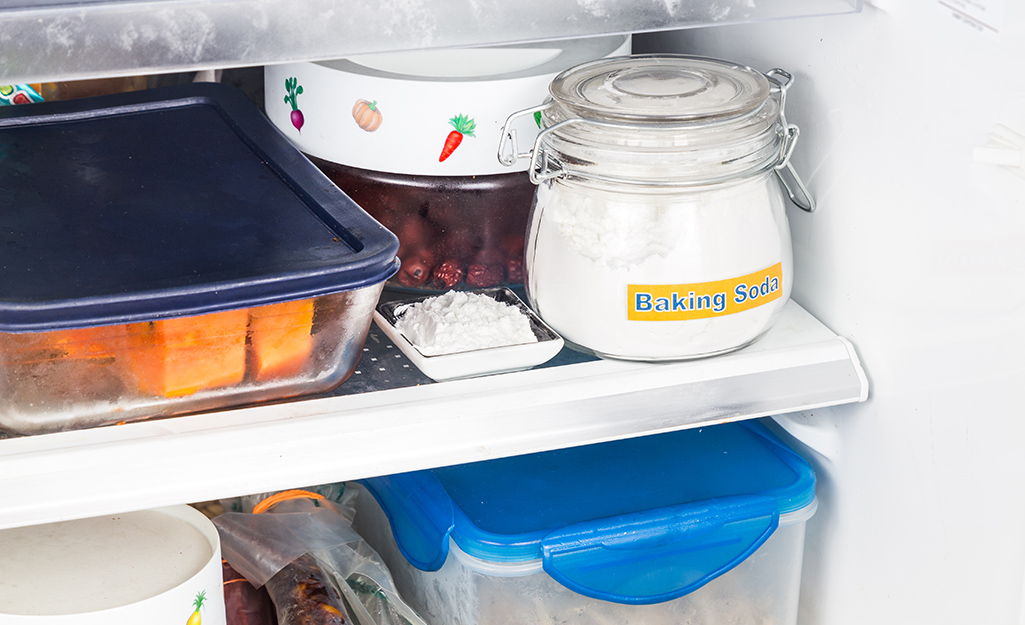
- Replace the refrigerator filters, if needed. Make note of the date and replace again in six months.
- Most modern refrigerators have efficient filter systems to eliminate odor buildup, but remember that a box of baking soda placed in the refrigerator can help absorb odors and keep it smelling fresh.
What Not to Store
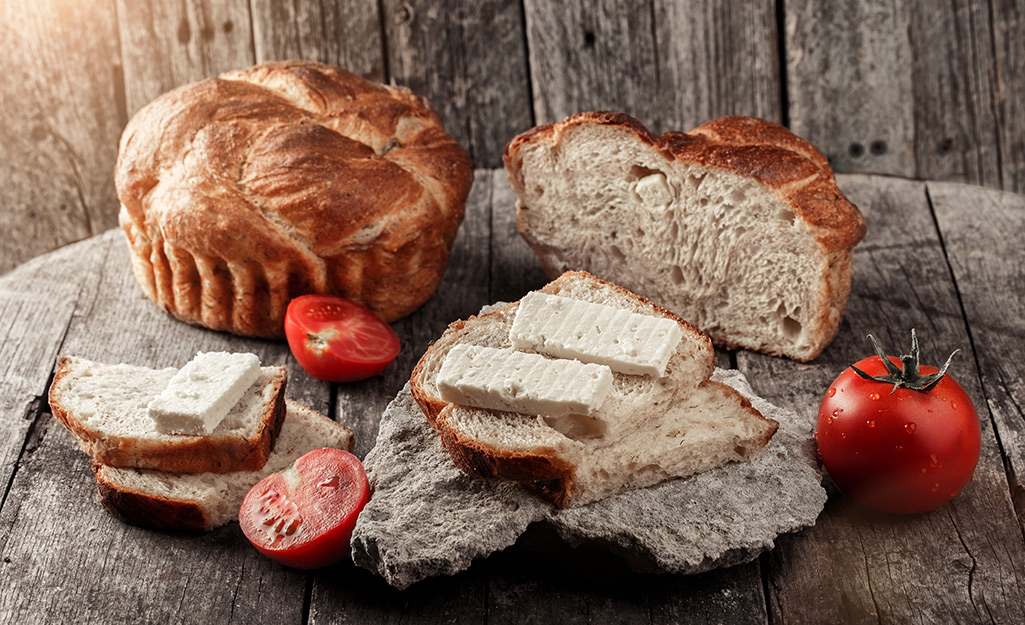
For some foods, the refrigerator is not the best environment. The cold, moist environment can change the food’s texture, cause it to sprout or rot faster or just diminish the quality of the food.
- Tomatoes
- Potatoes
- Onions
- Garlic
- Bread – can be frozen, but refrigerating bread causes it to go stale more quickly
- Coffee
- Bananas – to chill or not chill bananas is a subject of some debate, but they should never be refrigerated until they are completely ripened
Learn more about caring for your refrigerator with our guides on how to set the proper temperature in your refrigerator and how to defrost a fridge. From counter-depth refrigerators to door-in door models we can help you select the best refrigerator to fit your kitchen decor and your lifestyle. Use The Home Depot Mobile App to find what you need. Just say when, how and where.



























